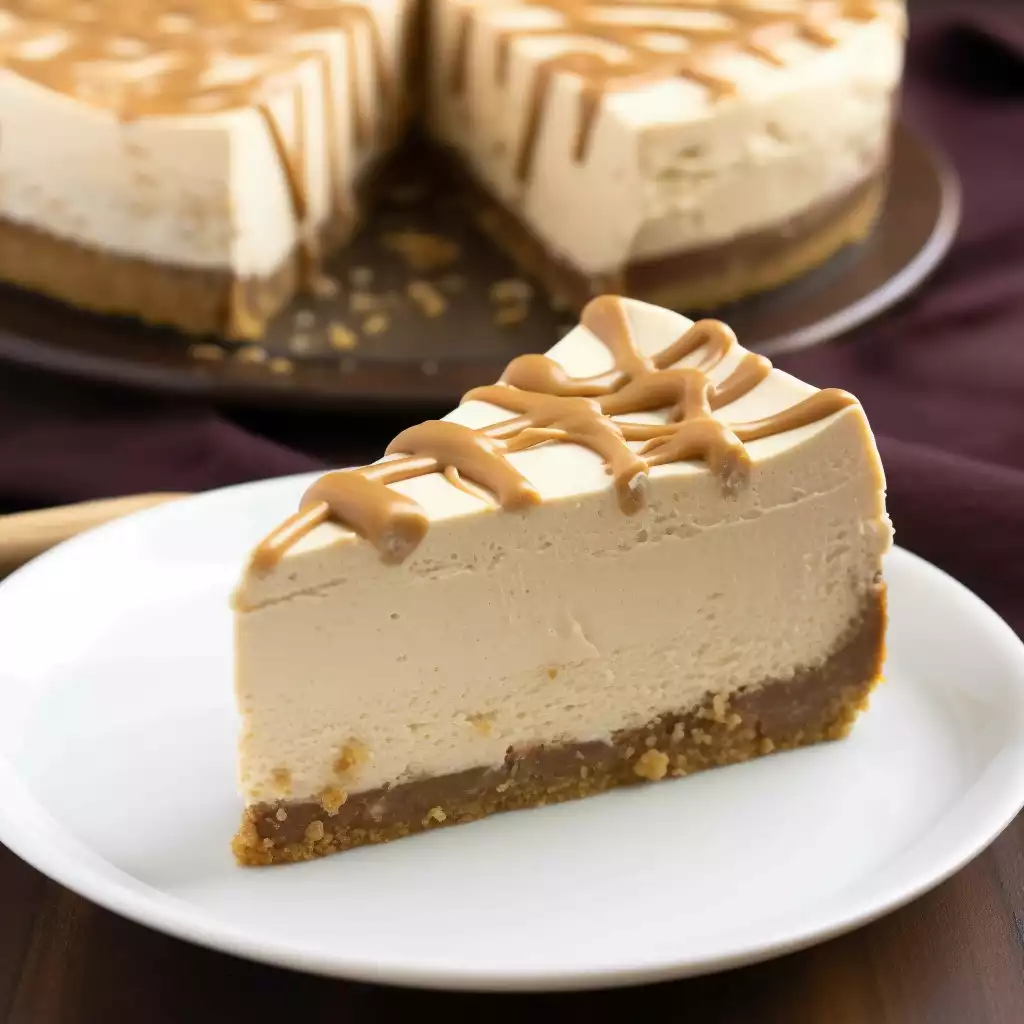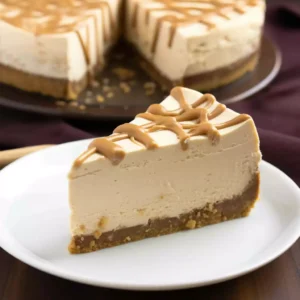
Indulgence takes a delectable turn with my Peanut Butter Cheesecake recipe. This delightful treat combines the smooth creaminess of cheesecake with the irresistible flavor of peanut butter, creating a dessert that’s sure to become a favorite in your repertoire.
Originating from the fusion of classic cheesecake with the beloved nutty goodness of peanut butter, this recipe offers a rich and satisfying experience for dessert enthusiasts. While cheesecake itself dates back centuries, this modern twist adds a playful and comforting touch that’s perfect for any occasion.
Despite its gourmet appeal, this Peanut Butter Cheesecake recipe is surprisingly simple to prepare, making it an ideal choice for both novice and experienced bakers alike.
With a buttery biscuit crust providing a sturdy base and a luscious peanut butter filling, each bite offers a harmonious blend of textures and flavors that will leave your taste buds singing.
Whether you’re hosting a special gathering or simply treating yourself to a sweet indulgence, my Peanut Butter Cheesecake is sure to delight and impress.
Expert Tip: For a firmer texture, chill the cheesecake in the refrigerator for several hours or overnight before serving.
Digestive Biscuits: These provide the crunchy base for the cheesecake crust, offering a buttery flavor that complements the creamy filling.
Butter (Unsalted and melted): The melted butter binds the crushed biscuits together, creating a cohesive crust that holds the cheesecake filling in place.
Cream Cheese: The main component of the filling, cream cheese lends a rich and creamy texture to the cheesecake.
Peanut Butter: Infusing the cheesecake with its signature nutty flavor, peanut butter adds depth and richness to each bite.
Granulated Sugar: Sweetens the cheesecake filling, balancing the tanginess of the cream cheese and enhancing the overall flavor profile.
Eggs: These help bind the filling together while adding structure and richness.
Sour Cream: Enhances the creaminess of the filling and provides a subtle tanginess that complements the sweetness of the other ingredients.
Vanilla Extract: Adds a hint of warmth and depth to the flavor profile of the cheesecake filling.
Peanut Butter (For the sauce): Creates a decadent peanut butter sauce that adds an extra layer of flavor and indulgence to the cheesecake.
Icing Sugar: Sweetens the peanut butter sauce, creating a smooth and velvety texture.
Milk: Helps thin out the peanut butter sauce to achieve the desired drizzling consistency.
Expert Tip: To easily remove the cheesecake from the springform pan, run a knife along the edge before releasing the sides.
Expert Tip: Ensure all ingredients are at room temperature before beginning to ensure smooth mixing and a uniform texture in the cheesecake filling.
The edges of the cheesecake should be set, and the center should still be slightly jiggly when gently shaken. It will continue to set as it cools.
Yes, you can use crunchy peanut butter for added texture in the filling. However, creamy peanut butter is recommended for the sauce for a smoother consistency.
Yes, you can make the cheesecake a day in advance. Simply store it in the refrigerator until ready to serve. Prepare the peanut butter sauce and drizzle it over the cheesecake just before serving.
Store any leftover cheesecake slices in an airtight container in the refrigerator for up to 3-4 days. Ensure it is well-covered to prevent it from absorbing any odors from the fridge.
Yes, you can freeze the cheesecake (without the sauce) for up to 1-2 months. Thaw overnight in the refrigerator before serving.
Here are some more recipes for you to enjoy! If you my recipes don’t forget to rate and leave a comment.
If you have any recipe suggestions, please do not hesitate to ask me. A great way to stay in contact with me is through Instagram, Facebook, Twitter and YouTube. Don’t forget to tag me @CookwithNabeela in your recipe photos!

Subscribe now to receive my latest recipes directly in your inbox. Stay up-to-date and never miss out!

I love to cook! I want to share with you my favourite, delicious family-friendly recipes. I want to inspire you to create fantastic food for your family every day.
Add your first comment to this post